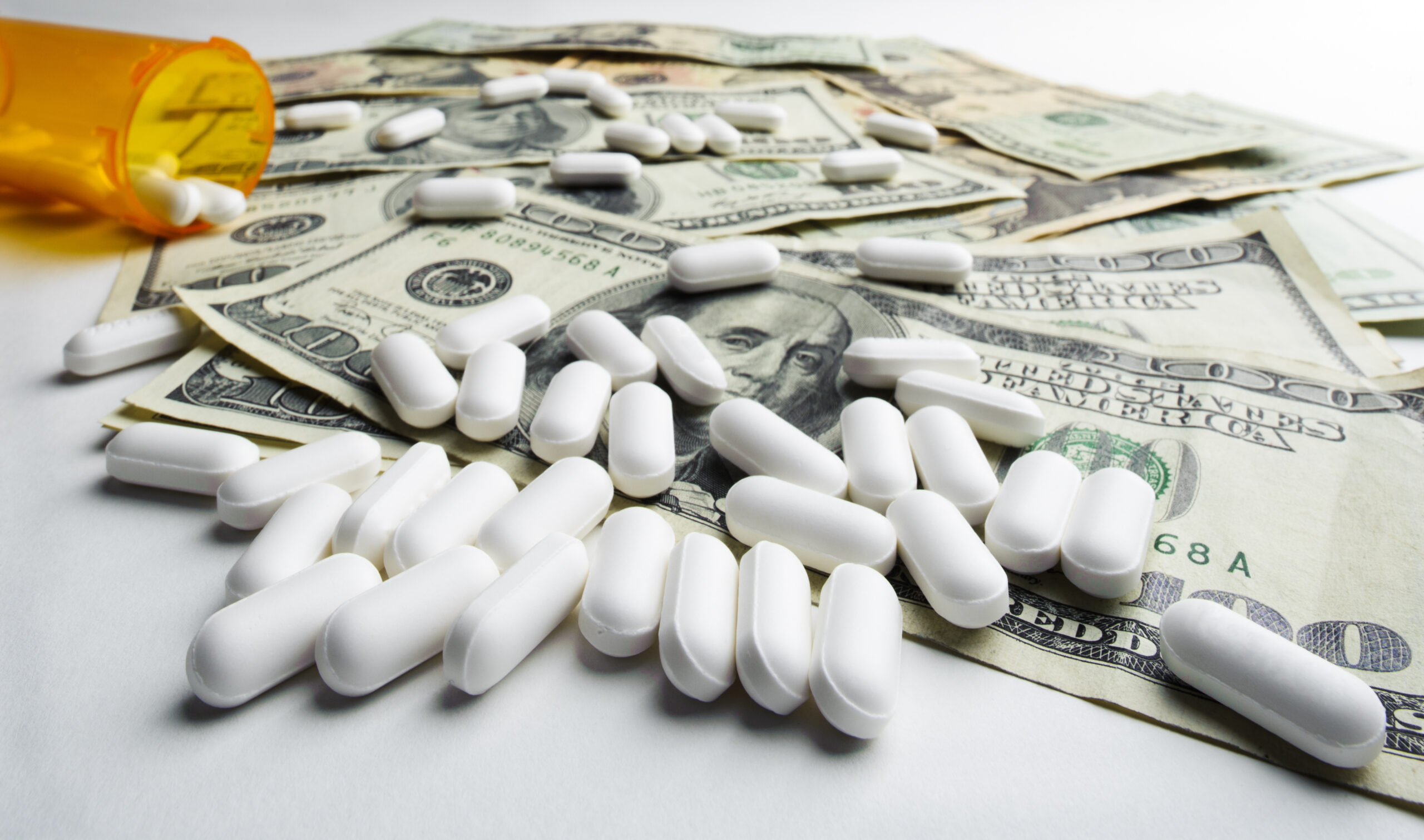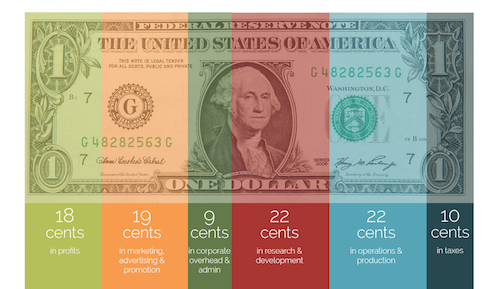© 2024 CSRXP- All Rights Reserved

“Dose of Reality” Breaking Down the Big Pharma Dollar
May 17, 2019
Part III: As Prices Rise, So Too Does Ad Spending
The average American spends $1,200 per year out-of-pocket on prescription drugs. Altogether, the 10 largest U.S.-based Big Pharma drug manufacturers pulled in a colossal $245 billion in revenue in just one year.
As prescription drug prices continue to climb, causing one in four Americans to not be able to afford their medications, do you ever wonder how Big Pharma spends all those dollars? We set out to get you the answer.
CSRxP, in partnership with GlobalData, conducted a study to determine how Big Pharma allocates revenue across six categories and broke it down to the dollar:

So far, we’ve poked holes in Big Pharma’s faulty defense that they have to raise drug prices because they need the money for research and development (R&D). Yesterday, we looked at Big Pharma’s soaring profits. Today, we’re looking at one of Big Pharma’s fastest growing spending priorities: marketing and advertising.
It’s almost impossible to turn on your television without seeing a commercial for a brand name prescription drug. Ads for blockbuster medications like Humira, Lyrica and Chantix are everywhere – and it’s no wonder considering how much money Big Pharma is pouring into marketing.
Spending Big and Still Climbing
The CSRxP and GlobalData study found more than 19 cents of every Big Pharma dollar goes to marketing and advertising — a whopping $47 billion when looking at just the top 10 U.S.-based drug makers.
And that number appears to be on the rise.
A report from Kantar Media released last month found that while Big Pharma continues to hike prices of life-saving medication, the industry’s spending on advertising is growing. In 2018, spending on advertising for just the top five selling brand name prescription drugs climbed five percent over the previous year.
Top Ad Spenders = Top Price-Gougers
The Big Pharma giants who are spending big on advertising are also among those who are the most aggressively raising prices on their top-selling drugs.
Take AbbVie and its top-selling drug Humira, for example:
- AbbVie doubled the list priceof Humira from 2012 to 2018 from $19,000 to a whopping $38,000. Sales of Humira reached a record breaking $20 billion in 2018.
- The Kantar Media report found that AbbVie increased advertising spending on Humira by 13 percent last year – bringing total ad spending on the drug to a staggering $487 million.
Pfizer was no different:
- Since 2012, Pfizer has increasedthe price of its pain management drug Lyrica by 163 percent. In January, Pfizer increased the list prices of Xeljanz and Chantix by 9.4 and five percent, respectively.
- Kantar Media found that Pfizer’s top advertising spending for those three drugs reached nearly $750 million dollars.
These Big Pharma giants who are investing boldly in advertising received a dose of badly needed medicine last week.
The U.S. Department of Health and Human Services (HHS) announced that starting in June, drug makers would be required to disclose list prices in their ads. A move to bring much-needed transparency to the marketplace.
Big Pharma’s trade association complained after the announcement and were met with a swift response:
“If you are ashamed of your drug prices, change your drug prices, it’s that simple.” – U.S. Secretary of the Department of Health and Human Services Alex Azar, POLITICO, 5/8/19
Tomorrow, we will wrap up our series by taking a look at Big Pharma’s tax conundrum.
CLICK HERE to read: Breaking Down the Big Pharma Dollar Part I: The Math Undercuts the R&D Defense.
CLICK HERE to read: Breaking Down the Big Pharma Dollar Part II: An Industry Booming Off of Price-Gouging.
###
